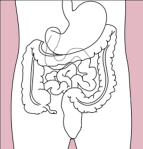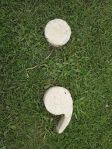Colon-oscopy
Susan Pierotti, Creative Text Solutions
You’re writing a long list of things; you’ve been given a list and need to reformat it into a paragraph; you need to itemise things and are having trouble organising it into a readable format.
Apart from employing a professional proofreader, how do you go about it?
Did you notice what I did in the first paragraph? I used semicolons to break up the list.
Elegant punctuation
Punctuation marks were not invented by grammar geeks to drool over, but were developed over time to make text easier to read.
Look at this sentence:
“Correct spelling and grammar will be awarded 20 points; punctuation will be given 10 points; editing and writing style will be allotted 50 points.â€
Here’s the same sentence with commas instead:
“Correct spelling and grammar will be awarded 20 points, punctuation will be given 10 points, editing and writing style will be allotted 50 points.â€
Did you fell a little breathless reading it through, wondering where the sentence was going to eventually stop?
Here it is again with full stops:
“Correct spelling and grammar will be awarded 20 points. Punctuation will be given 10 points. Editing and writing style will be allotted 50 points.â€
Written this way, the sentences aren’t necessarily connected.
Semicolons and colons are two of the most useful punctuation tools you can use, and they’re very elegant in giving precise meaning.
Colons
Colons are used when making a list, either in dot point form or in prose form. For instance:
“Here are the requirements for Music Camp: instruments, writing equipment, music stands and appropriate clothing.â€
[caption id="attachment_60" align="alignnone" width="143"] Wrong colon[/caption]
[caption id="attachment_61" align="alignright" width="112"]
Wrong colon[/caption]
[caption id="attachment_61" align="alignright" width="112"] Right colon[/caption]
We also use them when two statements are linked when the second clause explains the first clause in some way.
“It was a dark and stormy night: we were in big trouble.â€
Colons also help to introduce quotes. How did I introduce the examples above? With a colon!
And of course, the most common usage is when separating hours and minutes when denoting time; for example, 10:30 am.
Â
Semicolons
Semicolons are used when marking a grammatical effect that is stronger than a comma but weaker than a full stop (as in the previous sentence).
“It was a dark and stormy night; the weather was really foul.â€
Both parts of the sentence are equally balanced and can stand alone without altering the meaning of either. Compare with the colon example above.
Semicolons are invaluable in lists where there are already several commas.  I’ve typed it with only commas:
“An online editor will proofread text by doing a punctuation, spelling and grammar check, formatting your headings and correcting font irregularities and providing suggestions for content editing.â€
Try replacing the appropriate commas with semicolons.
Right colon[/caption]
We also use them when two statements are linked when the second clause explains the first clause in some way.
“It was a dark and stormy night: we were in big trouble.â€
Colons also help to introduce quotes. How did I introduce the examples above? With a colon!
And of course, the most common usage is when separating hours and minutes when denoting time; for example, 10:30 am.
Â
Semicolons
Semicolons are used when marking a grammatical effect that is stronger than a comma but weaker than a full stop (as in the previous sentence).
“It was a dark and stormy night; the weather was really foul.â€
Both parts of the sentence are equally balanced and can stand alone without altering the meaning of either. Compare with the colon example above.
Semicolons are invaluable in lists where there are already several commas.  I’ve typed it with only commas:
“An online editor will proofread text by doing a punctuation, spelling and grammar check, formatting your headings and correcting font irregularities and providing suggestions for content editing.â€
Try replacing the appropriate commas with semicolons.



